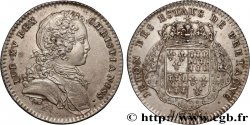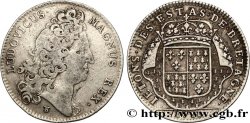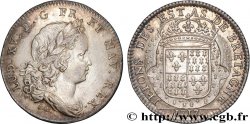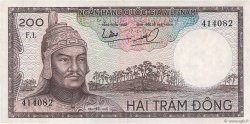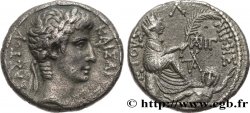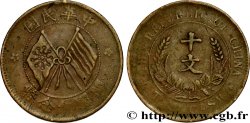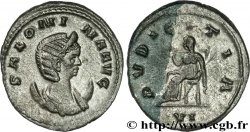fjt_072055 - BRETAGNE (ÉTATS DE...) Jeton Ar 27 n.d.
Nicht verfügbar.
Artikel auf unserem Online-Shop verkauft
Preis : 155.00 €
Artikel auf unserem Online-Shop verkauft
Preis : 155.00 €
Type : Jeton Ar 27
Datum: (1657-1675)
Datum: n.d.
Metall : Silber
Durchmesser : 27 mm
Stempelstellung : 6 h.
Gewicht : 6,18 g.
Rand lisse
Seltenheitsgrad : R1
Kommentare zum Erhaltungszustand:
Très beau droit avec une usure régulière de circulation. Léger décentrement de la frappe vers le haut. Petit défaut de métal sur la tranche à neuf heures au revers avec une usure plus prononcée notamment sur l’écharpe. Très belle patine sur les deux faces
N° im Nachschlagewerk :
Vorderseite
Titulatur der Vorderseite IECTONS. DES. ESTAZ. DE. BRETAGNE, (Z NORMAL).
Beschreibung Vorderseite Écu couronné écartelé aux 1 et 4 de France, aux 2 et 3 de Bretagne, dans une couronne formée de deux branches de laurier.
Rückseite
Titulatur der Rückseite (ROSETTE) POTIVS. MORI. QVAM. FEDARI.
Beschreibung Rückseite Hermine passant à gauche, portant une écharpe semée de mouchetures, sur un champ de mouchetures d’hermine sans fin.
Übersetzung der Rückseite (Plutôt la mort que le déshonneur).
Kommentare
Deux points au-dessus du fleuron central de la couronne au droit. Rosette à cinq pétales initiale au revers. Le coin de revers utilisé est le même que celui du Daniel 14. Le coin de droit est celui de Daniel 15. On note les mêmes défauts caractéristiques sur les coins. Le Daniel 15 est bien antérieur au 17, car une cassure de coin en travers du O de IECTONS est à peine visible sur le Daniel 15, mais aggravée sur le jeton Daniel 17. Cette constatation remet en cause Daniel, p. 16 “les différences entre les jetons suivants, parfois minimes, attestent que les coins ont été changés plusieurs fois durant cette période [1657-1675] (..)”. Il est clair, d’après nos constatations que les jetons Daniel 17 et 17 bis (voir ci-dessous) ont été probablement réalisé au début de la période avec les coins qui avaient servi en 1655.
Two dots above the central fleuron of the crown on the obverse. Initial five-petal rosette on the reverse. The reverse die used is the same as that of Daniel 14. The obverse die is that of Daniel 15. The same characteristic defects are noted on the dies. Daniel 15 is much earlier than 17, because a die break across the O of IECTONS is barely visible on Daniel 15, but worsened on the Daniel 17 token. This observation calls into question Daniel, p. 16 “the differences between the following tokens, sometimes minimal, attest that the dies were changed several times during this period [1657-1675] (..)”. It is clear from our findings that the Daniel 17 and 17 bis tokens (see below) were probably made at the beginning of the period with the dies that had been used in 1655
Two dots above the central fleuron of the crown on the obverse. Initial five-petal rosette on the reverse. The reverse die used is the same as that of Daniel 14. The obverse die is that of Daniel 15. The same characteristic defects are noted on the dies. Daniel 15 is much earlier than 17, because a die break across the O of IECTONS is barely visible on Daniel 15, but worsened on the Daniel 17 token. This observation calls into question Daniel, p. 16 “the differences between the following tokens, sometimes minimal, attest that the dies were changed several times during this period [1657-1675] (..)”. It is clear from our findings that the Daniel 17 and 17 bis tokens (see below) were probably made at the beginning of the period with the dies that had been used in 1655








 Berichten über einen Fehler
Berichten über einen Fehler Die Seite drucken
Die Seite drucken Teilen meiner Auswahl
Teilen meiner Auswahl Stellen Sie eine Frage
Stellen Sie eine Frage Einlieferung/Verkauf
Einlieferung/Verkauf
 Details
Details
